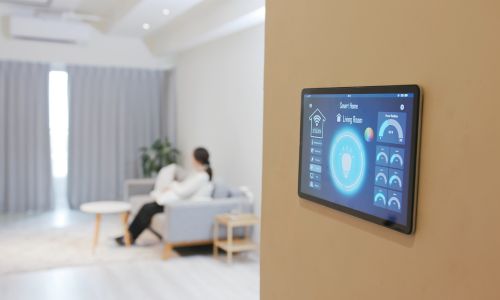In the ever-evolving landscape of home security, the integration of cutting-edge technologies has become a pivotal aspect of safeguarding our living spaces. Home surveillance, once reliant on traditional systems, is now undergoing a revolutionary transformation with the advent of Artificial Intelligence (AI) and smart analytics. This paradigm shift not only enhances the capabilities of surveillance systems but also introduces a new era of efficiency and sophistication.
Definition and Significance of Home Surveillance
Home surveillance, commonly associated with the use of cameras and sensors, plays a crucial role in safeguarding properties and ensuring the well-being of inhabitants. Traditionally, surveillance systems have focused on capturing and recording footage, offering a reactive approach to security. However, with advancements in AI and smart analytics, the role of home surveillance has transcended mere recording to proactive threat detection and prevention.
Evolution of Technology in Home Security
The journey of home security has witnessed a transformative evolution. From basic closed-circuit television (CCTV) setups to the integration of smart devices and cloud-based solutions, the trajectory has been marked by a constant pursuit of heightened security measures. The emergence of AI and smart analytics represents the latest chapter in this evolution, promising not only enhanced security but also a more intelligent and responsive surveillance infrastructure.
AI in Home Surveillance
AI in home surveillance enhances security by employing advanced technologies such as facial recognition and anomaly detection, providing real-time monitoring and alerts. These intelligent systems empower homeowners with proactive measures, transforming traditional surveillance into a smart, efficient, and automated safeguard for their homes.

Overview of Artificial Intelligence (AI)
AI, in the context of home surveillance, refers to the integration of machine learning algorithms and computer vision to enable systems to analyze and interpret visual data. Unlike traditional surveillance systems, AI-powered solutions can autonomously learn and adapt, making them more adept at recognizing patterns, anomalies, and potential threats.
Integration of AI in Home Surveillance Systems
The integration of AI in home surveillance is a game-changer. Intelligent cameras equipped with AI algorithms can distinguish between routine activities and suspicious behavior, reducing false alarms and enhancing the accuracy of threat detection. Facial recognition, object detection, and behavioral analysis are some of the key features AI brings to home security, providing a more nuanced understanding of the environment.
Benefits and Advancements
The benefits of incorporating AI into home surveillance are multifaceted. Real-time analysis allows for immediate response to security events, minimizing the risk of incidents. Machine learning algorithms improve over time, refining the system’s ability to identify potential threats. Additionally, AI enables predictive analysis, helping homeowners anticipate security challenges based on historical data, weather conditions, and other factors.
Smart Analytics in Home Security
Smart analytics revolutionizes home security by employing advanced technologies like artificial intelligence and machine learning. These systems intelligently analyze data from various sensors and devices, enabling proactive threat detection and real-time alerts. With the power of smart analytics, homeowners can enjoy a heightened sense of security and peace of mind in their living spaces.
Understanding Smart Analytics in Home Surveillance
Smart analytics in home surveillance refers to the intelligent processing and interpretation of data collected by surveillance systems. This goes beyond traditional video recording, as smart analytics involve extracting meaningful insights from the data, such as identifying patterns, trends, and anomalies that might indicate security risks.

Applications and Features
Smart analytics enhance the functionality of home surveillance systems by introducing features like automated alerts, event correlation, and predictive modeling. Automated alerts notify homeowners or security personnel of potential threats in real time, allowing for a swift response. Event correlation involves analyzing multiple data points to provide a comprehensive understanding of a situation. Predictive modeling uses historical data to anticipate potential security issues, empowering homeowners to take preventive measures.
Enhancements in Data Processing and Interpretation
The traditional approach to surveillance involved manually reviewing hours of footage to identify relevant information. With smart analytics, this process becomes more streamlined and efficient. Algorithms can sift through vast amounts of data, flagging relevant events and reducing the time and effort required for analysis. This not only enhances the speed of response but also allows for a more focused and accurate assessment of security situations.
The Synergy of AI and Smart Analytics
The synergy of AI and Smart Analytics unlocks unparalleled insights by harnessing the power of artificial intelligence to process vast datasets with precision. This dynamic duo not only enhances decision-making processes but also propels innovation, offering businesses a competitive edge through data-driven strategies and predictive analytics. Together, they form a symbiotic relationship, driving efficiency and uncovering valuable patterns that fuel informed, strategic choices.
How AI and Smart Analytics Complement Each Other
The combination of AI and smart analytics creates a synergy that amplifies the capabilities of home surveillance. AI’s ability to learn and adapt is complemented by smart analytics’ capacity to process and interpret data intelligently. Together, they provide a comprehensive solution that not only detects threats but also offers insights into the nature and context of security events.
Real-World Examples of Successful Integration
Numerous real-world examples highlight the success of integrating AI and smart analytics into home surveillance. Advanced systems can differentiate between normal activities, such as a family member entering the home, and potentially threatening situations, such as an unauthorized intrusion. These examples showcase the practical benefits of a system that can think, learn, and adapt in real-time.
Improved Efficiency and Effectiveness in Security
The synergy between AI and smart analytics leads to a significant improvement in the efficiency and effectiveness of home security. False alarms are minimized, as the system becomes more adept at distinguishing between routine activities and genuine threats. The proactive nature of this integrated approach ensures that security measures are not just reactive but anticipatory, preventing potential incidents before they escalate.
Challenges and Considerations
Implementing AI and smart analytics in home surveillance presents challenges such as privacy concerns, as the technology may inadvertently intrude on personal spaces. Additionally, ensuring robust cybersecurity measures is crucial to prevent unauthorized access and potential misuse of sensitive data. Balancing technological advancements with ethical considerations is essential for the responsible deployment of AI in home security systems.
Privacy Concerns and Ethical Considerations
The integration of AI in home surveillance raises valid concerns about privacy and ethical considerations. Facial recognition technology, for instance, has sparked debates about the balance between security and individual privacy. Striking the right balance and implementing robust privacy measures are essential to address these concerns.
Potential Risks and Vulnerabilities
As with any technological advancement, there are potential risks and vulnerabilities associated with AI-powered home surveillance. These include the possibility of system hacks, misuse of collected data, and the risk of relying too heavily on automated systems. Identifying and addressing these risks is crucial to ensuring the security and reliability of AI-driven surveillance solutions.
Mitigation Strategies
Implementing mitigation strategies involves a combination of robust cybersecurity measures, ethical guidelines, and transparent communication with users. Encryption of data, regular security audits, and adherence to privacy regulations are essential components of effective mitigation strategies. Additionally, involving users in the decision-making process and providing opt-out options for certain features can address ethical concerns.
Future Trends
Future trends in AI include ubiquitous integration into daily life, a focus on ethical AI practices, and collaborative human-AI partnerships, fostering breakthroughs in automation and decision-making.
Emerging Technologies in Home Surveillance
The future of home surveillance is poised to witness the integration of even more advanced technologies. Innovations such as 360-degree cameras, LiDAR sensors, and drone-based surveillance are on the horizon, offering more comprehensive and adaptable solutions for home security. These technologies will further enhance the ability of surveillance systems to detect and respond to diverse security challenges.
Anticipated Advancements in AI and Smart Analytics
The continuous evolution of AI and smart analytics holds the promise of more sophisticated and intelligent home surveillance systems. Improved machine learning algorithms, enhanced predictive modeling, and increased automation are anticipated advancements. These developments will contribute to a more seamless and proactive approach to home security.
Impact on the Future of Home Security
The integration of emerging technologies, coupled with advancements in AI and smart analytics, will redefine the future of home security. Homes will be equipped with increasingly intelligent surveillance systems that not only detect and prevent security threats but also seamlessly integrate with other smart home devices for a comprehensive and interconnected security ecosystem.
Conclusion
In conclusion, the synergy of AI and smart analytics is reshaping home surveillance, ushering in a new era of proactive and efficient security. As homeowners embrace advanced technologies, the evolving landscape promises not just secure homes but intelligent protection. Challenges like privacy concerns and ethical considerations necessitate careful navigation, but the future holds the promise of even more sophisticated, interconnected, and seamlessly adaptive home security solutions. The journey towards smarter, safer homes continues, led by the transformative integration of AI and smart analytics.





